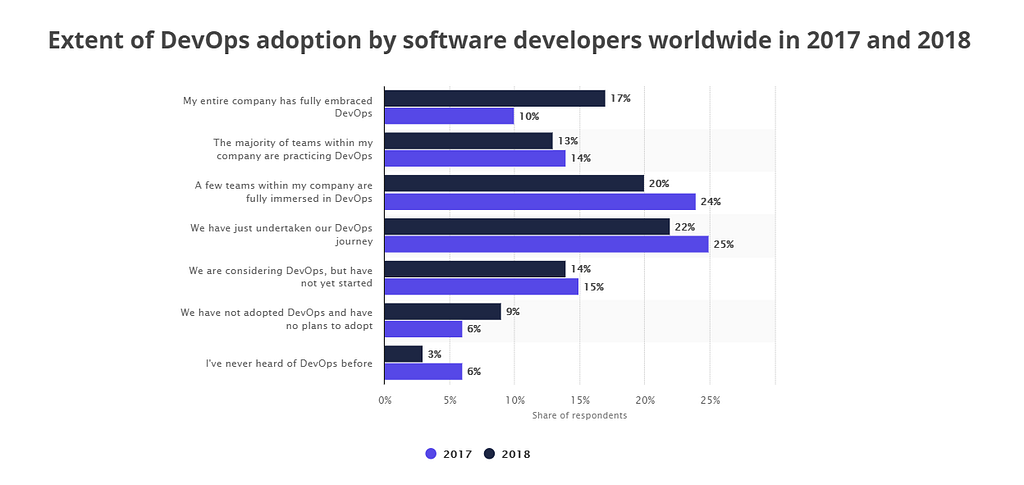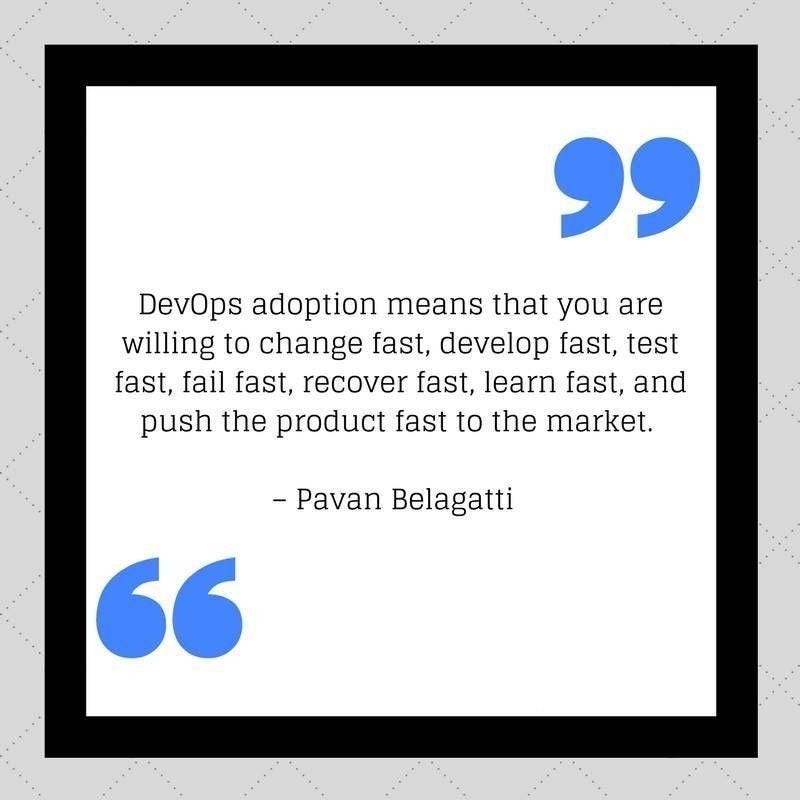Latest news about Bitcoin and all cryptocurrencies. Your daily crypto news habit.
 Photo by Pete Johnson on pexels.com
Photo by Pete Johnson on pexels.com
There is no hard and fast rule to say this is the exact DevOps path to success, but we can always draw some experimental and hypothetical ideas and create a DevOps plan accordingly. In general, doing DevOps right means approaching DevOps in a systematic, platform-centric fashion and letting the culture fall into place naturally. Fix the root causes, and the symptom will go away. Whatever we call it, the end goal is to make the process of software development and delivery more efficient and merge dev and ops for a smooth business operation. Whatever the definition of DevOps is, but the ideology behind is the same.
Just to make it more clear, embracing DevOps means that you are willing to change fast, develop fast, test fast, fail fast, recover fast, learn fast, and push the products fast to the market. The primary goal of DevOps is simple: Ship software updates frequently, reliably, and with better quality and moreover, DevOps is a mental model transformation of the entire organization for better organizational agility, other words..it’s about delivery Nirvana.
Forrester called 2018 the “year of enterprise DevOps” with data showing that 50% of organizations have implemented DevOps.
The statistic from statista shows the extent to which software developers worldwide have adopted DevOps in their workplace, in 2017 and 2018, based on a survey of development professionals.
 Source Credit: Statista
Source Credit: Statista
Let us see what DevOps taught us in 2018
Listing down below the 15 facts that DevOps taught us in 2018.
1. DevOps is not an individual role, it is a group effort.
2. Your infra should be able to handle a failed deployment automatically and roll back. If it can’t, you’re doing it wrong.
3. DevOps means different things to different people.
4. If any task cannot be automated, remove it instantly from the task list.
5. Communication is more important than tooling and will make or break an organization.
6. Shift the focus of Security to the left in the development life-cycle.
7. Jenkins != CI/CD … you have TravisCI, Gitlab-CI, Shippable …etc etc etc
8. Always design with autoscaling in mind. Automate-all-the-things. One click deploy to one-click revert.
9. Create ready to use images in AWS and use those images for auto-scaling instead of scripted from GitHub builds.
10. There is a real skillset shortage in the DevOps field.
11. The CI/CD pipeline is one of the best practices for DevOps teams to implement, for delivering code changes more frequently and reliably.
12. Do not automate a bad process, you end up with an automated bad process — DOES18
13. Testers who know how to code and automate scripts to test various cases are in massive demand in DevOps.
14. It is our quick response to rapidly changing technology trends that generate the excitement and drive the brand value, DevOps helps in growth hacking your brand value exponentially by delivering trending things (features) faster to the market.
15. There is still some confusion and overlap in the definitions of DevOps and SRE, but we can always say that SRE is to DevOps what Scrum is to Agile.
Making DevOps a real deal in 2019
All companies are software companies today, and faster innovation is the key to winning against your competitors. DevOps is crucial in helping you accelerate your release cycles and innovate faster than others.
You need to have processes that support DevOps to streamline shipping of software, and they should be:
Integrated — You need to have a unified platform with one view across deployment pipelines for all applications.
Heterogenous — You need a polyglot that supports all languages, tools, and clouds.
Secure — You need to have policy-driven permissions enabled and have end-to-end audit tracking of who is doing what.
Moving a little further from the cultural aspect of DevOps, know these eight points as a general checklist to assess yourself to see if you are on the right track of DevOps,
1. You have a continuous improvement mindset and culture established in the organization.
2. You deploy frequently and automatically with rapid release cycles.
3. You leverage containers and have microservices architecture.
4. You have operations, sysadmins, and developers working together collaboratively.
5. You have a continuous feedback loop system for self-assessment and learning.
6. You have constant communication between teams.
7. You have a customized DevOps metrics table to see if the results are visible.
8. You have figured out tools and platforms for CI and CD.
9. You have understood continuous security is essential and have implemented the critical controls in a DevOps environment.
We all know that DevOps is here to stay and it is the need today. Doing DevOps the right way starts with the right thinking approach and having a growth mindset. Figuring out the critical processes that you can automate easily. DevOps is just going to be even more exciting in 2019.
8 DevOps Trends to Be Aware of in 2019
BTW, the future of DevOps is ‘Assembly Lines’
Happy DevOpsing:)
What DevOps Taught Us in 2018 was originally published in Hacker Noon on Medium, where people are continuing the conversation by highlighting and responding to this story.
Disclaimer
The views and opinions expressed in this article are solely those of the authors and do not reflect the views of Bitcoin Insider. Every investment and trading move involves risk - this is especially true for cryptocurrencies given their volatility. We strongly advise our readers to conduct their own research when making a decision.
